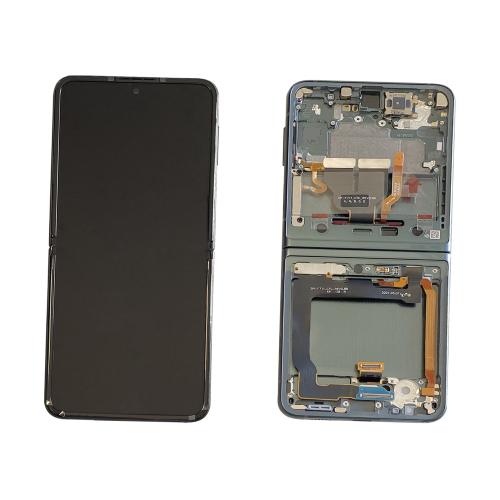
How to Get the Most Out of Your Samsung LCD Screen
Samsung’s LCD video walls provide a seamless large-format viewing experience. With ultra-narrow bezel widths, these displays can minimize distractions to let your audience focus on the content.
The Samsung 43AM70A is a great TV for home entertainment and comes with a good selection of apps. It uses Tizen 5.5 software and is capable of HDR 10 material.
High Resolution
High resolution with vibrant, realistic images. Full HD provides twice as many scanning lines as standard definition TV, so you can experience more detail and sharper clarity.
Samsung’s innovative HyperReal Engine delivers a superior image quality with optimised performance and stunning picture enhancement for amazing colour and lifelike texture. The remarkably natural, crystal-clear samsung LCD Screen Full HD images invite you to a viewing experience that redefines reality.
Display all the colours as they were meant to be seen with Wide Colour Enhancer. See the whole spectrum, from rich reds to vivid greens and blues for an immersive and impactful experience.
The resolution quality on your Samsung television varies depending on the media you’re playing. To change the resolution quality on your Samsung television, press the Home button on your remote and select ‘Settings’, then head to ‘Picture Settings’. You can choose between 16:9 and 4:3 to suit your content needs. Each source has its own default resolution settings that determines the media quality you’re seeing on your screen. Once you’ve changed the resolution settings for your exterior device, it will take a few seconds for the screen to update to show its new resolution.
Wide Viewing Angles
One of the most important aspects of a TV is its viewing angle. Viewing angles determine how accurate the image appears when you are not in front of the screen. The higher the viewing angle, the better the picture quality.
IPS panels have excellent wide viewing angles and are recommended for use in rooms with large seating arrangements. They are also known for having great contrast ratios and reflection handling. OLED TVs have even better wide viewing angles than IPS panels. They have self-emissive pixels that emit light in all directions and can display HDR content with excellent color uniformity.
However, there are some viewing angle limitations with OLED TVs. They do not have the same viewing angles as IPS or VA LCD TVs, and the image starts to fade away at extreme viewing angles. Moreover, the brightness and contrast will start to change at oddly wide angles. However, the visual impression of an off-center angle has a lot to do with personal perception and one’s own visual sense, so any claims about the specific angle at which a parameter decreases in quality are based on subjective evaluations.
Brightness
The brightness of the display is an important factor in how well it can be seen. This is usually measured in a unit called cd/m2, and the higher this number, the brighter the screen is. Having a high-brightness display can help reduce eye strain, especially in environments with strong ambient light.
Another important parameter is the display’s contrast. The Galaxy Tab has a good Contrast Rating, which is the ratio of Peak White Luminance to Black Level Brightness. However, the Galaxy Tab also has a relatively high Screen Reflectance, which can reduce the contrast and visibility of screen content in bright ambient lighting.
Like other LCDs, the Samsung Galaxy Tab’s Peak White Luminance decreases significantly with viewing angle. This is a common problem with displays, although some are better than others. Luckily, the Galaxy Tab has a feature that uses a light sensor to automatically adjust its Peak Brightness settings. This can be helpful in reducing eye strain and increasing the usability of the Galaxy Tab in various environments.
Contrast
The contrast of your Samsung screen is the ratio between dark blacks and bright whites on the display. The higher the contrast, the more vivid and realistic your images will appear. You can adjust the contrast settings using the on-screen display menu, or OSD. This feature allows you to adjust the brightness, contrast, color, sharpness and backlight.
You can also choose between different picture modes that automatically change the display settings to suit your current activity. This is a convenient way to get the best possible image quality without having to manually adjust the settings yourself.
You can also select between different color tones. For example, you can choose Standard to keep the whites as they are or Cool to make them more blue. You can even choose Warm to make the whites more reddish or yellowish. You can also adjust the Gamma setting to create a more natural image. A proper Gamma setting will allow you to see bright colors more clearly and dark colors better. This will also help reduce eye strain.
Wide Color Gamut
As the name implies, TVs with wide color gamut can display more colors than those in previous color spaces. Generally speaking, you’ll see a larger range of colors in photos and videos, and even live sporting events. While it’s not as big an improvement as better contrast ratios via HDR, a wider color gamut can help make images more realistic at normal seating distances.
Many mid-range and flagship smartphones these days offer good coverage of the DCI-P3 digital cinema color space, and some desktop operating systems also support samsung LCD Screen a wider gamut than sRGB. The latest HDR formats, including Dolby Vision and HDR10, mandate that content and displays provide at least a minimum of DCI-P3 coverage, but the industry is moving toward higher standards like Rec. 2100 and greater coverage of the Adobe RGB color space.
However, just because a screen can display a larger number of colors doesn’t mean it will look identical to another, even if both are labeled “WCG.” There are other metrics that you can use to judge a display, namely white point and Delta E.
